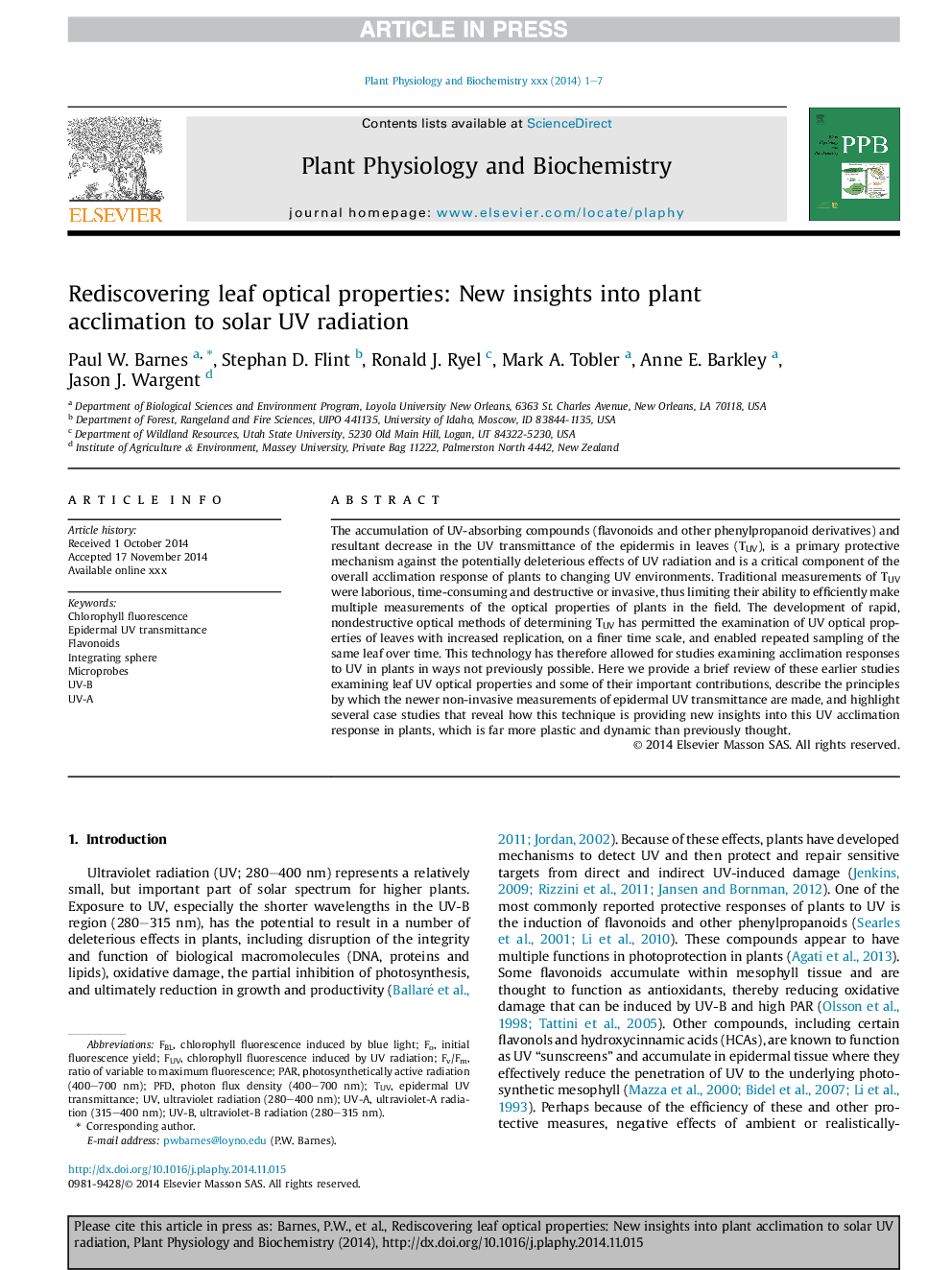| Article ID | Journal | Published Year | Pages | File Type |
|---|---|---|---|---|
| 8354903 | Plant Physiology and Biochemistry | 2015 | 7 Pages |
Abstract
The accumulation of UV-absorbing compounds (flavonoids and other phenylpropanoid derivatives) and resultant decrease in the UV transmittance of the epidermis in leaves (TUV), is a primary protective mechanism against the potentially deleterious effects of UV radiation and is a critical component of the overall acclimation response of plants to changing UV environments. Traditional measurements of TUV were laborious, time-consuming and destructive or invasive, thus limiting their ability to efficiently make multiple measurements of the optical properties of plants in the field. The development of rapid, nondestructive optical methods of determining TUV has permitted the examination of UV optical properties of leaves with increased replication, on a finer time scale, and enabled repeated sampling of the same leaf over time. This technology has therefore allowed for studies examining acclimation responses to UV in plants in ways not previously possible. Here we provide a brief review of these earlier studies examining leaf UV optical properties and some of their important contributions, describe the principles by which the newer non-invasive measurements of epidermal UV transmittance are made, and highlight several case studies that reveal how this technique is providing new insights into this UV acclimation response in plants, which is far more plastic and dynamic than previously thought.
Keywords
Related Topics
Life Sciences
Agricultural and Biological Sciences
Plant Science
Authors
Paul W. Barnes, Stephan D. Flint, Ronald J. Ryel, Mark A. Tobler, Anne E. Barkley, Jason J. Wargent,
